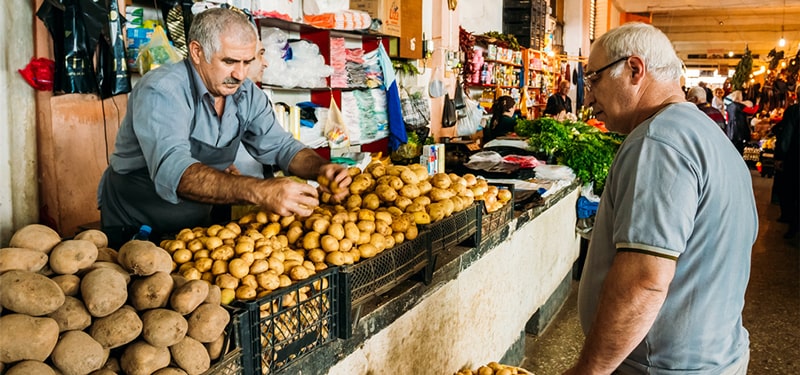Groceries are an important part of every Indian household’s monthly expenditure. With food prices often fluctuating and the rising cost of living, finding ways to cut down on grocery expenses has become essential. Saving money on groceries doesn’t mean compromising quality, it’s about making smarter choices and being more strategic in your shopping habits. Here’s a simple guide to help you save money on groceries, practical tips, and a sample table to help with your planning.
Plan Before You Shop
The most important step of smart grocery shopping is planning. Start by assessing what you already have at home. Check your pantry, fridge, and freezer to avoid buying items you don’t need. Then, create a shopping list of essentials and stick to it. Impulse purchases often lead to overspending and buying items you don’t use.
Benefits of Planning:
- Reduces waste by avoiding duplicate purchases.
- Helps you stick to a budget
- Saves time and effort
- Improves Time Management
Buy in Bulk
Bulk purchasing is one of the most cost-effective strategies, especially for staple items such as rice, wheat flour, pulses, and spices. Wholesale markets like Metro Cash & Carry or local mandis often offer better prices than retail stores. Just ensure you have sufficient storage space to keep these items fresh.

Use Discounts, Coupons, and Cashback
Online grocery platforms such as BigBasket, JioMart, and Blinkit frequently offer discounts and cashback options. Check festive sales, bank tie-ups, and exclusive app deals. Additionally, use cashback apps like Paytm or coupon websites like GrabOn for further savings. Many stores also accept physical coupons, which can significantly reduce your total bill.
Explore Local Markets
Local markets offer fresh, affordable produce. Fruits and vegetables bought directly from farmers or local vendors are cheaper and often fresher than supermarkets. Local markets also allow room for bargaining, something that can’t be done in retail chains.

Switch to Private Labels
Supermarkets and online stores often have their in-house brands for essentials. These private labels are significantly cheaper than premium brands but maintain comparable quality. Items like rice, flour, and cleaning supplies are worth trying under these labels.
Choose Seasonal and Local Produce
Eating seasonally is one of the smartest ways to save money while enhancing the nutritional value of your meals. Seasonal fruits and vegetables are naturally abundant, making them more affordable than out-of-season items that require extra resources for cultivation or import. Moreover, produce grown in its natural growing season tends to be fresher, tastier, and more nutrient-rich than those forced to grow in unnatural conditions or transported over long distances.
Time Your Shopping Trips
Timing can make a huge difference in how much you spend. Visit local markets in the evenings, when vendors may offer discounts to clear their stock. For supermarkets and online stores, check for flash sales and end-of-month clearance offers.
Reduce Food Wastage
Minimizing food waste is a vital but often overlooked aspect of saving money. Buy only what you can consume within the shelf life. Store perishables like fruits and vegetables in breathable bags and keep grains in airtight containers to extend their freshness.
Make Homemade Alternatives
Ready-made items like curd, ghee, and spice mixes often have a premium price tag. Preparing these at home not only saves money but also ensures better quality. For instance, making homemade spice blends or snacks can significantly cut costs. Check out some guides to make ghee at home for the perfect recipe.

Opt for Subscriptions and Loyalty Programs
Online grocery platforms and stores like D-Mart, Amazon Pantry, and Reliance Fresh offer subscription services and loyalty programs. Subscribers often get exclusive discounts, free deliveries, or early access to sales. Accumulated loyalty points can be redeemed for future discounts, providing long-term savings. You can also use Amazon Pantry coupons to save on your purchases.
Track Prices and Compare
With several options available, comparing prices is easier than ever. Use price comparison apps or visit multiple stores to find the best deals. Many platforms offer price alerts, notifying you when items you frequently purchase are on sale.
Adopt Sustainable Practices
Sustainable grocery shopping practices can save you money while also benefiting the environment. By choosing reusable bags, buying in bulk to reduce packaging waste, and opting for locally sourced items, you can make a positive impact. Additionally, consider growing your herbs and vegetables in a small kitchen garden. Items like coriander, mint, chillies, and tomatoes are easy to grow at home and can reduce the need to purchase them regularly from a shop.

Sample Weekly Budget Plan
To make the most of your money, follow a weekly plan that includes staples, fresh produce, and optional indulgences.
| Category | Item | Estimated Cost (₹) |
| Staples | Rice (2 kg) | ₹300 |
| Wheat Flour (2 kg) | ₹90 | |
| Fresh Produce | Tomatoes (2 kg) | ₹90 |
| Potatoes (2 kg) | ₹100 | |
| Protein | Eggs (12 pcs) | ₹100 |
| Paneer (500 g) | ₹200 | |
| Snacks | Biscuits (2 packs) | ₹180 |
| Miscellaneous | Cooking Oil (1 L) | ₹140 |
Conclusion
Saving money on groceries requires planning, smart shopping habits, and taking advantage of deals and local markets. From buying in bulk to using loyalty programs and preparing homemade staples, there are plenty of ways to reduce costs while maintaining quality and variety. With a strategic approach, you can significantly lower your monthly grocery bill and channel the savings into other priorities. Start today, and watch your expenses reduce without sacrificing your lifestyle and health!







